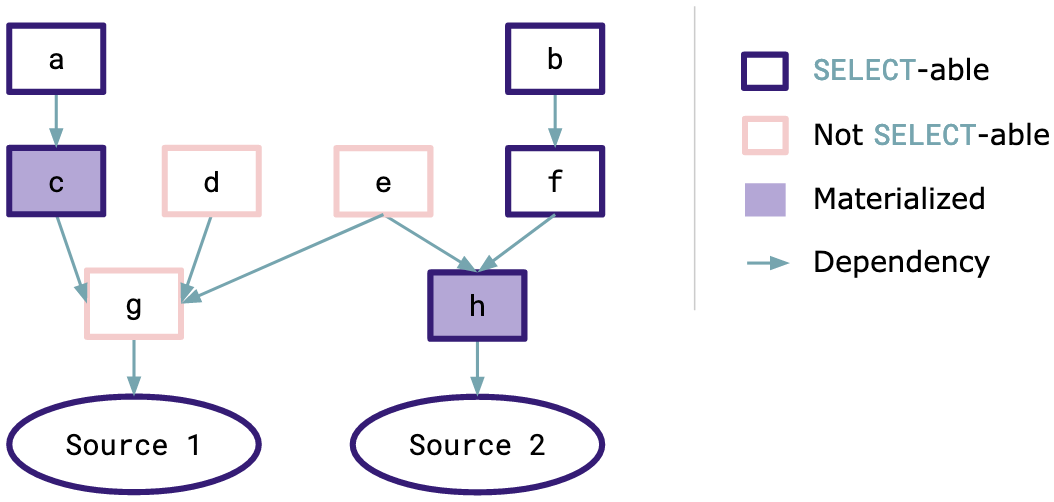CREATE VIEW
CREATE VIEW creates a non-materialized view, which only provides an alias
for the SELECT statement it includes.
Note that this is very different from Materialize’s main type of view,
materialized views, which you can create with CREATE MATERIALIZED VIEW.
Conceptual framework
CREATE VIEW simply stores the verbatim SELECT query, and provides a
shorthand for performing the query. For more information, see Key Concepts: Sources.
Syntax
| Field | Use |
|---|---|
| TEMP / TEMPORARY | Mark the view as temporary. |
| OR REPLACE | If a view exists with the same name, replace it with the view defined in this statement. You cannot replace views that other views or sinks depend on, nor can you replace a non-view object with a view. |
| IF NOT EXISTS | If specified, do not generate an error if a view of the same name already exists. If not specified, throw an error if a view of the same name already exists. (Default) |
| view_name | A name for the view. |
| ( col_ident… ) | Rename the SELECT statement’s columns to the list of identifiers, both of which must be the same length. Note that this is required for statements that return multiple columns with the same identifier. |
| select_stmt | The SELECT statement whose output you want to materialize and maintain. |
Details
Querying non-materialized views
You can only directly SELECT from a non-materialized view if all of the
objects it depends on (i.e. views and sources in its FROM clause) have access
to materialized data (i.e. indexes or constants). That is to say that all of a
non-materialized view’s data must exist somewhere in memory for it to process
SELECT statements. For those inclined toward mathematics, it’s possible to
think of this as “transitive materialization.”
If views can process SELECT statements, we call them “queryable.”
However, this limitation does not apply to creating materialized views.
Materialized view definitions can SELECT from non-materialized view,
irrespective of the non-materialized view’s dependencies. This is done by
essentially inlining the definition of the non-materialized view into the
materialized view’s definition.
The diagram below demonstrates this restriction using a number of views
(a-h) with a complex set of interdependencies.

A few things to note from this example:
- c can be materialized despite the dependency on a non-materialized view.
- If g were materialized, all views would be queryable.
Memory
Non-materialized views do not store the results of the query. Instead, they
simply store the verbatim of the included SELECT. This means they take up very
little memory, but also provide very little benefit in terms of reducing the
latency and computation needed to answer queries.
Converting to materialized view
You can convert a non-materialized view into a materialized view by adding an index.
Temporary views
The TEMP/TEMPORARY keyword creates a temporary view. Temporary views are
automatically dropped at the end of the SQL session and are not visible to other
connections. They are always created in the special mz_temp schema.
Temporary views may depend upon other temporary database objects, but non-temporary views may not depend on temporary objects.
Examples
CREATE VIEW purchase_sum_by_region
AS
SELECT sum(purchase.amount) AS region_sum,
region.id AS region_id
FROM region
INNER JOIN user
ON region.id = user.region_id
INNER JOIN purchase
ON purchase.user_id = user.id
GROUP BY region.id;
This view is useful only in as much as it is easier to type
purchase_sum_by_region than the entire SELECT statement.
However, it’s important to note that you could only SELECT from this view:
- In the definition of
CREATE MATERIALIZED VIEWorCREATE VIEWstatements. - If
region,user, andpurchasehad access to materialized data (i.e. indexes) directly or transitively.